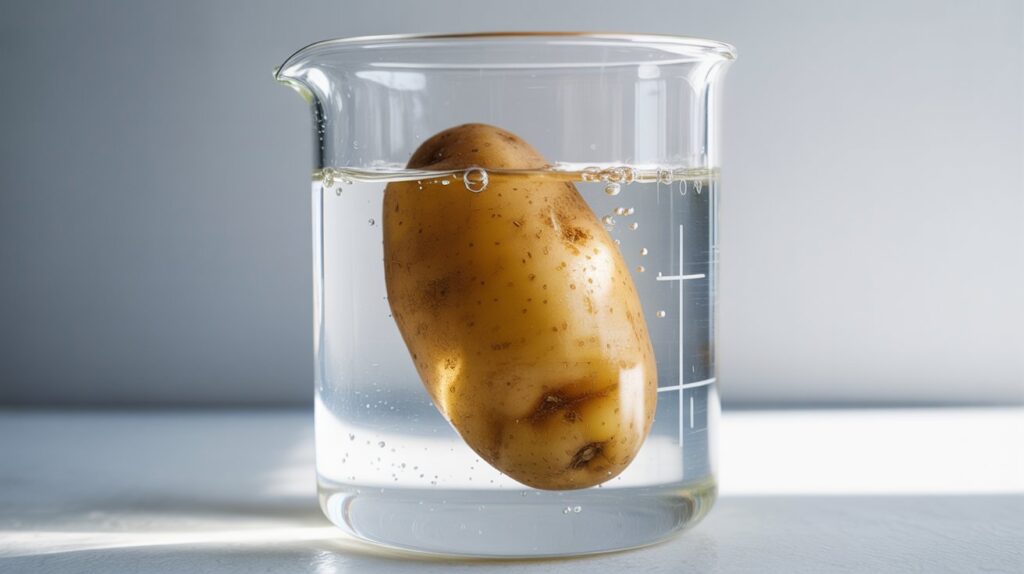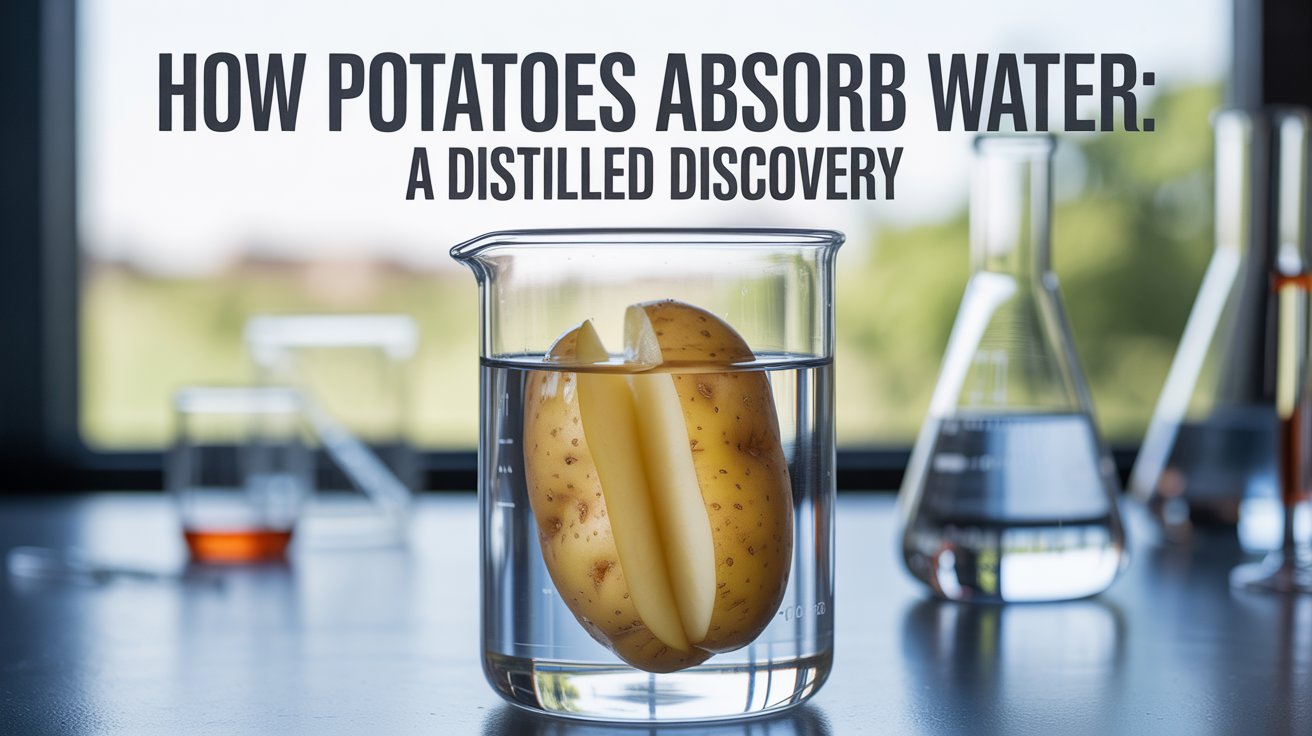Potato absorption in distilled water is a fascinating phenomenon that has intrigued scientists and researchers for decades. When a potato is placed in distilled water, it undergoes a process known as osmosis, where water molecules move from an area of high concentration to an area of low concentration. This results in the potato absorbing water and increasing in size and weight. Understanding the science behind this process is not only important for academic purposes, but it also has practical applications in various fields such as agriculture, food science, and medicine. In this article, we will get into the science behind osmosis and potato absorption, explore the factors that affect this process, and discuss the role of cell membranes in potato absorption. We will also examine practical applications of understanding potato absorption and review experiments and studies that have been conducted on this topic. By the end of this article, readers will have a comprehensive understanding of potato absorption in distilled water and its implications for further research.
The Science Behind Osmosis and Potato Absorption
Osmosis is the movement of water molecules across a semi-permeable membrane from an area of high water concentration to an area of low water concentration. In the case of potato absorption in distilled water, the potato cells have a lower concentration of water compared to the distilled water surrounding them. As a result, water molecules move into the potato cells through osmosis, causing the cells to swell and the potato to increase in size and weight. This process is essential for the survival of plant cells, as it helps maintain turgor pressure and keeps the cells rigid. Without osmosis, plant cells would wilt and eventually die. The science behind osmosis and potato absorption is not only important for understanding the behavior of plant cells, but it also has practical applications in agriculture, where it can be used to improve crop yield and quality. Additionally, this knowledge is crucial in the field of food science, where it can be used to develop new preservation techniques and improve the texture and flavor of food products.

Factors Affecting Potato Absorption in Distilled Water
Several factors can affect the rate and extent of potato absorption in distilled water. One of the most significant factors is the concentration gradient between the potato cells and the surrounding distilled water. The greater the difference in concentration, the faster and more extensive the absorption will be. Additionally, the surface area of the potato exposed to the distilled water can also impact absorption. A larger surface area allows for more water molecules to come into contact with the potato cells, leading to increased absorption. The temperature of the distilled water can also affect potato absorption, as higher temperatures can increase the kinetic energy of water molecules, leading to faster diffusion through the cell membrane. Furthermore, the presence of solutes in the distilled water can impact osmosis and potato absorption. If the distilled water contains solutes such as salt or sugar, it can alter the concentration gradient and affect the movement of water molecules. Understanding these factors is crucial for controlling and manipulating potato absorption in practical applications such as food preservation and agriculture.
The Role of Cell Membranes in Potato Absorption
The cell membrane plays a crucial role in regulating potato absorption in distilled water. The cell membrane is semi-permeable, meaning it allows certain molecules, such as water, to pass through while restricting the movement of others. In the case of osmosis, the cell membrane allows water molecules to move freely across it, but it prevents the passage of larger solute molecules. This selective permeability is essential for maintaining the internal environment of the cell and preventing it from bursting or shrinking due to osmotic pressure. Additionally, the cell membrane contains specialized proteins and channels that facilitate the movement of water molecules during osmosis. These proteins help regulate the flow of water into and out of the cell, ensuring that osmotic balance is maintained. Understanding the role of cell membranes in potato absorption is crucial for developing strategies to manipulate this process for practical applications such as food preservation and agriculture.
Practical Applications of Understanding Potato Absorption
Understanding potato absorption in distilled water has several practical applications in various fields. In agriculture, this knowledge can be used to improve crop yield and quality by manipulating osmotic pressure in plant cells. For example, farmers can use osmotic solutions to regulate water uptake in crops during periods of drought or excess rainfall, helping plants survive under challenging environmental conditions. In food science, understanding potato absorption can be used to develop new preservation techniques that rely on osmotic pressure to extend the shelf life of food products. For instance, osmotic dehydration is a process that involves immersing food products in hypertonic solutions to remove moisture and preserve them for longer periods. This technique is commonly used to preserve fruits, vegetables, and meat products. Additionally, understanding potato absorption can also have implications in medicine, where it can be used to develop new drug delivery systems that rely on osmotic pressure to release medications at controlled rates within the body.
Experiments and Studies on Potato Absorption in Distilled Water
Numerous experiments and studies have been conducted to investigate potato absorption in distilled water and osmosis in plant cells. These studies have provided valuable insights into the factors that affect osmotic pressure in plant cells and have contributed to our understanding of this complex process. For example, researchers have conducted experiments to examine how different concentrations of solutes in distilled water impact potato absorption and osmotic pressure. These studies have revealed that higher solute concentrations can lead to increased osmotic pressure and more extensive potato absorption. Additionally, researchers have investigated how temperature affects osmosis and have found that higher temperatures can accelerate the movement of water molecules through cell membranes. Furthermore, studies have been conducted to explore the role of cell membranes in regulating osmotic pressure and potato absorption. These experiments have provided valuable insights into the mechanisms that govern osmosis in plant cells and have contributed to our understanding of this fundamental biological process.
Conclusion and Implications for Further Research
In conclusion, potato absorption in distilled water is a complex process that is governed by osmosis and regulated by cell membranes. Understanding the science behind osmosis and potato absorption is not only important for academic purposes but also has practical applications in agriculture, food science, and medicine. Factors such as concentration gradients, surface area, temperature, and solute presence can impact potato absorption in distilled water, making it crucial to consider these variables when studying or manipulating this process. The role of cell membranes in regulating osmotic pressure is also essential for maintaining cellular homeostasis and preventing damage due to excessive water uptake or loss. Practical applications of understanding potato absorption include improving crop yield and quality, developing new preservation techniques, and designing drug delivery systems based on osmotic pressure.
Moving forward, further research is needed to explore new strategies for manipulating osmotic pressure in plant cells to improve agricultural practices and food preservation techniques. Additionally, more studies are needed to investigate the role of cell membranes in regulating osmosis and develop new technologies that leverage this knowledge for practical applications. By continuing to study potato absorption in distilled water and osmosis in plant cells, researchers can unlock new insights into this fundamental biological process and develop innovative solutions with far-reaching implications for various industries.



